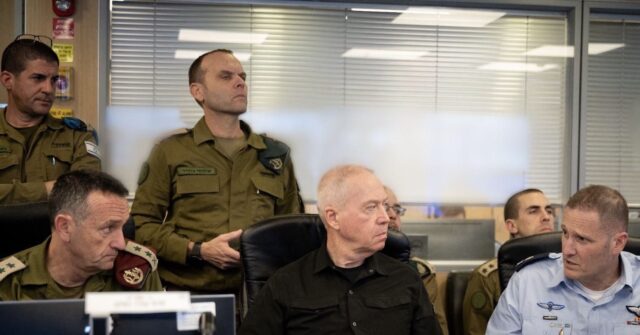Israeli Defense Minister Yoav Gallant recently made a significant announcement regarding the military capabilities of the Iran-backed Hezbollah organization, indicating that it has been drastically weakened amid the ongoing conflict in Lebanon, with only 20% of its prior rocket capacity remaining. This assessment reflects Israel’s strategic success in its military operations against Hezbollah, which have intensified over the past month. Gallant highlighted that Hezbollah is no longer organized in a manner that allows it to launch sustained and potent attacks, suggesting that it has lost its status as a deterrent to Israeli forces. Such a reduction in effectiveness marks a critical turning point in the conflict, as Israel seeks to secure a safer environment for its northern population.
The ongoing war, now in its fourth week, erupted after Hezbollah initiated a series of attacks on Israeli border communities, coinciding with its show of solidarity with Hamas following the October 1 terror attacks. In light of the escalated hostilities, over 60,000 residents, both Jewish and Arab, were evacuated from northern Israel for their safety. The initial stockpile of rockets held by Hezbollah was estimated to exceed 100,000 – a formidable arsenal capable of sustaining consistent attacks. As the conflict has unfolded, however, Israel’s military responses have shifted from restraint to intensified combat, including precision strikes aimed at eliminating Hezbollah’s senior command structure and targeting critical infrastructure.
Israel’s military strategy has involved aggressive tactics, beginning with targeted assaults on Hezbollah leaders and weapons caches. The attacks have focused on both ground and air operations, leading to significant gains in dismantling the organization’s military apparatus. The “pager” attack, which notably disabled or killed numerous senior commanders, marked a pivotal moment in the conflict that shifted the tactical advantage. Additionally, Israeli ground troops have engaged directly by infiltrating southern Lebanon to dismantle Hezbollah’s bases and destroy weaponry hidden within civilian centers, highlighting the complexities of urban warfare and the challenges of minimizing civilian casualties.
Despite the current assessment of Hezbollah’s reduced capacity, the organization remains a significant threat, and military analysts predict that the conflict may prolong for several more weeks. As the situation develops, various scenarios could emerge, including a potential diplomatic resolution. Israeli media speculations suggest that the possibility of concluding the war by the end of the year through a brokered agreement by the United States is an outcome that some officials are contemplating. This would represent a shift from the current operational focus to a political solution aimed at stabilizing the region.
The situation unfolding in Lebanon after weeks of ongoing combat underscores the dynamic and precarious nature of Middle Eastern geopolitics, particularly as it concerns the balance of power between Israel and Iran-backed groups like Hezbollah. The Israeli Defense Minister’s remarks serve as a testament not only to the operational success of Israeli forces but also to the broader implications for deterrence and regional security. As Iran reassesses Hezbollah’s utility as a proxy in its broader strategy, the landscape of power dynamics within the region is likely to be reshaped significantly.
In conclusion, while Hezbollah may be currently operating at a significantly diminished capacity due to Israel’s military actions, the conflict’s resolution remains uncertain and fraught with complexities. The humanitarian and political ramifications, along with the potential for renewed hostilities, will continue to influence the region’s stability. Ultimately, the outcome of this war will not only depend on military engagements but also on the efficacy of diplomatic interventions and the ability of regional actors to adapt to the new security paradigm that emerges from this conflict.

